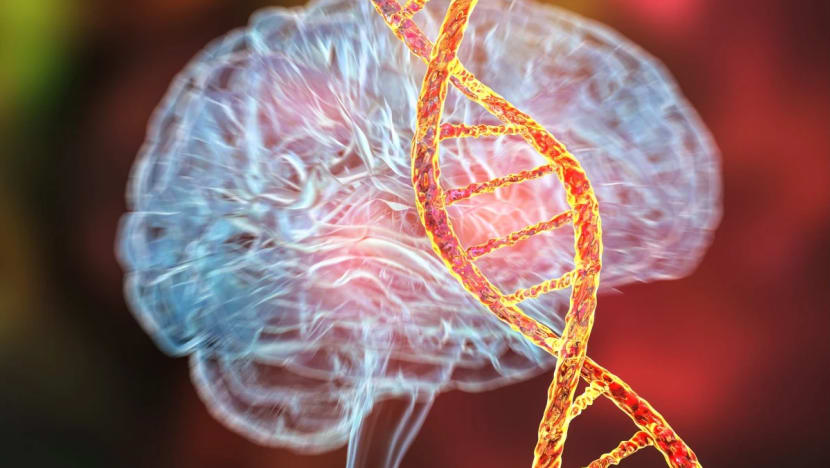ASD jab: Chinese scientists reach milestone in revolutionary gene therapy for autism

Autism spectrum disorder can affect the ability to interact and communicate, as well as cause repetitive behaviours and intense interests. (Photo: Shutterstock via SCMP)
This audio is AI-generated.
- A genome editing system developed by Chinese scientists successfully modified a mutated gene linked to autism when tested on mice
- It is the first effective treatment of mice with ASD-related mutations using base editing in the brain, according to the researchers
Chinese scientists have reached a significant milestone in creating the first injection that can undo the signs of autism through genetic base editing within the brain.
The treatment, developed by researchers in Shanghai, showed positive results when tested on mice.
The team created a genome editing system, which successfully modified the DNA of mice that had been given a mutation found in some patients with autism spectrum disorder (ASD).
Mice given the injection containing the editing system registered a decrease in ASD-associated behaviour.
In a paper on their research, published in the journal Nature Neuroscience on Nov 27, the scientists said the potential treatment method could not just be used for patients with ASD, but also other genetic neurodevelopmental disorders.
ASD affects about 1 per cent of the global population. One in every 36 children in the United States is diagnosed with the disorder, according to the US Centres for Disease Control and Prevention (CDC).
The disorder can affect a person’s ability to interact and communicate, as well as cause repetitive behaviours and intense interests.
To study the impact of genomic editing for the treatment of ASD, the researchers created mice with mutations in the MEF2C gene, which they said was “strongly associated” with the disorder.
Mutations in this gene were thought to cause developmental deficits, speech problems, repetitive behaviours and epilepsy, the paper said.
The male mice given the mutation were found to have lower levels of the MEF2C protein in the brain, and had symptoms that mimicked ASD-like hyperactivity, problems with social interaction and repetitive behaviour.
Earlier this month, Britain approved the world’s first CRISPR-Cas9 gene editing therapy for patients with blood conditions such as sickle cell disease.
CRISPR-based systems perform gene editing by cutting the DNA double strand in half, which is repaired by cells once editing is complete. This process can lead to unintended mutations.
To limit unintended mutations, the researchers used a single-base editing system – which they called AeCBE – that is able to work on individual DNA base pairs without creating any cuts.
Li Dali, a professor of Life Sciences at East China Normal University, who is not an author on the paper, said this was the first effective treatment of mice with ASD-related mutations using base editing in the brain, according to Shenzhen-based autism media platform Dami & Xiaomi.
To deliver the system into the brain, it needs to pass through the blood-brain barrier, which is a group of cells that tightly regulate the entry of molecules into the brain.
Researchers overcame this barrier by packaging their editing system on to an adeno-associated virus vector – capable of crossing over into the brain.
The combined editing system and virus vector was administered to mutant mice through a single injection into a tail vein. A few weeks later, the mice were examined.
“The treatment successfully restored MEF2C protein levels in several brain regions and reversed the behavioural abnormalities in MEF2C-mutant mice,” the paper said.
Through examining brain cells of the mice, the team found that the editors were able to perform repairs across the brain at an accuracy rate of 20 per cent, which was enough to raise levels of the MEF2C protein.
The samples taken were a mixture of neurons along with other cells, so the team said that the editing rate of the neurons alone could be higher, as base editing happens preferentially in these cells.
Researcher Chen Jin and his student Zhu Junjie at ShanghaiTech University, who are not authors on the paper, said that “although cases of ASD are extremely complex” this study provides guidance in using base editing to treat neurodevelopmental disorders, according to Dami & Xiaomi.
Expansion of the technology and lower costs would make treatment using base editing more prevalent, the team added.
“Individualised gene editing therapy could become feasible and affordable for patients in the near future,” the paper said.
ASD is a complex disorder, and hundreds of mutations have been found to be related to it, said Zou Xiaobing, chief physician in child development behaviour at the Third Affiliated Hospital of Guangzhou’s Sun Yat-sen University, according to Dami & Xiaomi.
For some patients, the disorder may not be caused by a single nucleotide variation like it was for the mice in the study, but rather more complex mutations that would be difficult to edit.
“Even if an effective gene therapy method is found in a specific single nucleotide variation, it is at least a very valuable thing for people with autism caused by this gene,” said Zou, who is not an author on the Nature Neuroscience paper.
“Continuing scientific, targeted and personalised intervention and training based on the child’s specific situation is still the main way to deal with autism.”
“This work suggests that in vivo base editing might be a feasible approach for intervening in genetic brain disorders in humans,” the paper said.
While the target scope of the team’s genetic editing – as well as that of other scientists – was still limited, the paper said base editing systems with broader targets “would notably facilitate the development of genetic tools to intervene in genetic disorders”.
This article was first published on SCMP








